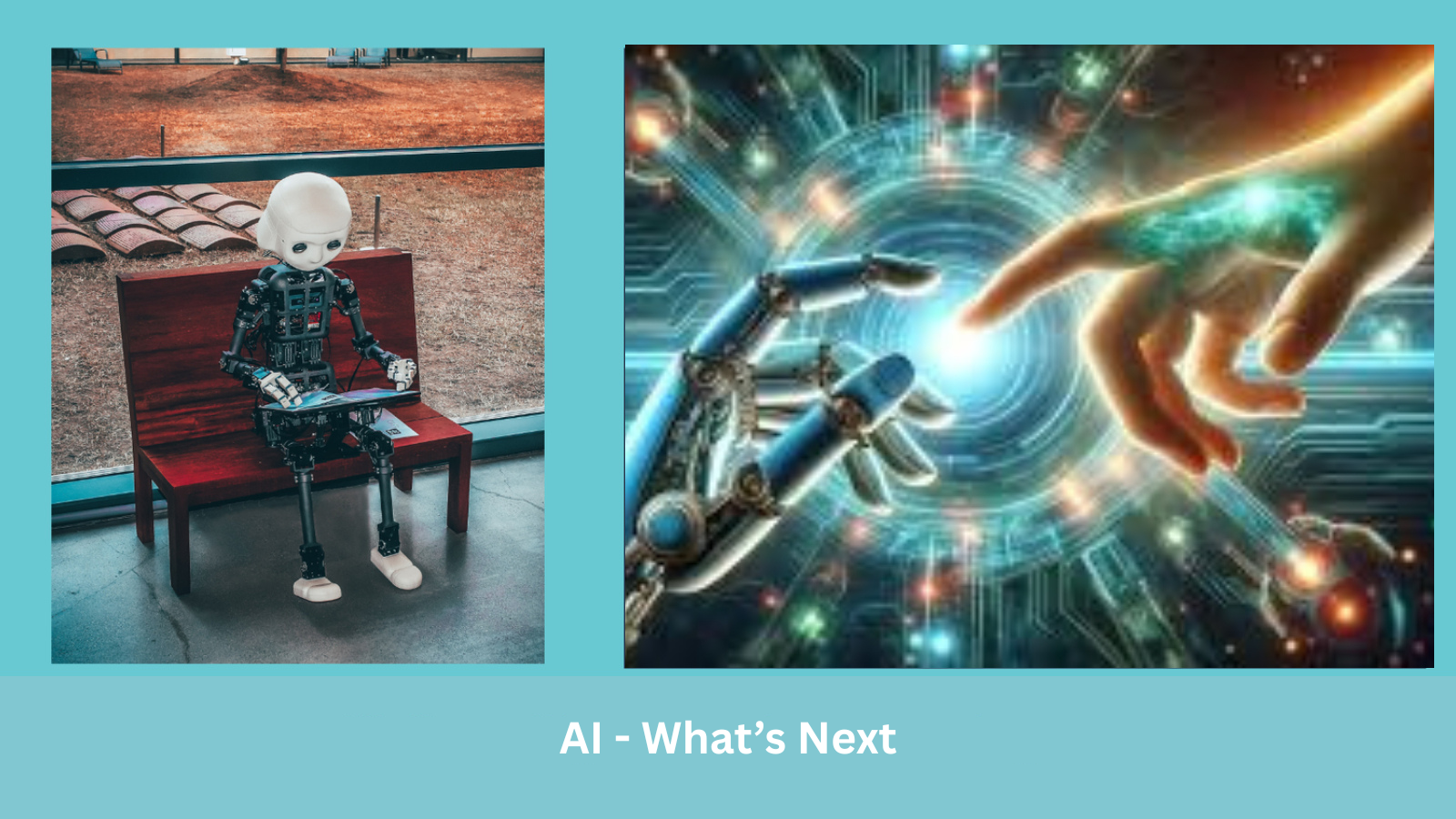We live in a moment of transition—where artificial intelligence is no longer science fiction, but part of our daily lives. The image above captures this shift in two compelling frames:
On the left, we see a humanoid robot with a childlike face, sitting quietly on a bench, absorbed in a tablet. The scene is still, even mundane. This is today’s AI: observant, learning, modeled after us—but still passive. It evokes innocence. Curiosity. Potential.
On the right, we encounter a glowing, futuristic vision—reminiscent of Michelangelo’s “Creation of Adam.” A robotic hand reaches toward a human one, almost touching. Energy surges between them. It’s a powerful image that asks: what happens when the student becomes the collaborator? Or even… the creator?
Together, the two images form a subtle timeline—from present capability to future possibility. The question they raise is not technical, but deeply human:
Where is this all heading?
From Tool to Partner
For now, AI mostly serves us—analyzing data, drafting emails, recognizing speech, recommending content. But each innovation brings us closer to a future where AI doesn’t just assist—it advises, learns, and adapts to us with startling nuance.
The leap between “task performer” and “thinking partner” might seem far, but the groundwork is already being laid.
Technology Mirrors Us
AI reflects the best and worst of its creators. It learns from our choices, our words, and our values (or lack thereof). That’s what makes the second image so potent. It’s not just about power—it’s about relationship.
When we touch the machine, it touches back. What do we pass on in that exchange?
The Real Question
“AI – What’s Next?” isn’t just about hardware or headlines. It’s about who we are becoming as a species—and what we’re building in our own image.
As AI grows more capable, the decisions we make today—about ethics, boundaries, inclusion, and intent—will shape tomorrow’s reality.
The real frontier isn't just artificial intelligence.
It’s artificial responsibility.


